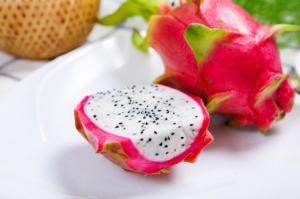Introduction
Plum trees are a great addition to any garden or landscape, and Florida is no exception. However, choosing the best location to plant your plum trees can be a challenging task, as Florida's climate and soil conditions may vary widely depending on the region. In this article, we will explore different factors to consider when selecting the ideal spot to plant your plum trees in Florida.
Climate considerations
Florida's climate can be divided into two regions: the northern and southern parts of the state. In the northern parts of the state, where temperatures can drop to below freezing in winter, plum trees prefer well-drained soil, full sun exposure, and shelter from wind. On the other hand, in the southern parts of the state, where temperatures rarely fall below 40 degrees Fahrenheit, plum trees can tolerate partial shade and damp soil, but they require protection from strong winds and hot afternoon sun exposure. Therefore, it is crucial to choose the right plum tree varieties that match your region's climate.
Soil conditions
Plum trees grow best in well-drained soils that are rich in organic matter and have a pH range of 5.5 to 6.5. In Florida, soil types vary widely across different regions. In the northern parts of the state, where soil is more loam and sand-based, adding organic matter such as compost or manure can enhance soil fertility and drainage. In the southern parts of the state, where soil is more clay-based, planting plum trees in raised beds or mounds with organic matter mixed into the soil can improve drainage and prevent root rot.
Sun exposure
Plum trees require full sun exposure to produce high-quality fruit. In Florida, where the sun's intensity can be extremely high during the summer, it is essential to choose a location where your plum trees can get adequate sunlight without suffering from heat stress. In the northern parts of the state, planting plum trees in a south-facing area can maximize sun exposure. In the southern parts of the state, where afternoon sun exposure can be intense, planting plum trees in partial shade or using shade cloth can protect them from sunburn or heat stress.
Watering and drainage
In Florida, where rainfall can vary across regions, it is crucial to provide your plum trees with adequate water and proper drainage. Over-watering can cause root rot, while under-watering can lead to drought stress and poor fruit quality. In the northern parts of the state, where rainfall is more frequent, it is essential to ensure proper drainage to prevent waterlogging. In the southern parts of the state, where rainfall is less frequent, watering plum trees deeply and regularly during the dry season can prevent drought stress and enhance fruit quality.
Care and maintenance
Once you have planted your plum trees, it is important to care for them properly to ensure optimum growth and fruit production. Regular pruning, fertilization, and pest control are essential to keep your plum trees healthy and productive. In Florida, pests such as plum curculio, aphids, and scale insects can damage plum trees, and regular inspection and treatment are necessary to prevent infestations. Additionally, supplying plum trees with appropriate fertilizers and nutrients can enhance fruit quality and stimulate growth.
Conclusion
Choosing the best location to plant your plum trees in Florida involves considering various factors that influence their growth, fruit quality, and overall health. By understanding your region's climate, soil conditions, sun exposure, watering, and maintenance requirements, you can create an ideal environment for your plum trees to thrive and produce delicious fruit for years to come.

 how many times do yo...
how many times do yo... how many planted tre...
how many planted tre... how many pine trees ...
how many pine trees ... how many pecan trees...
how many pecan trees... how many plants comp...
how many plants comp... how many plants can ...
how many plants can ... how many plants and ...
how many plants and ... how many pepper plan...
how many pepper plan...































